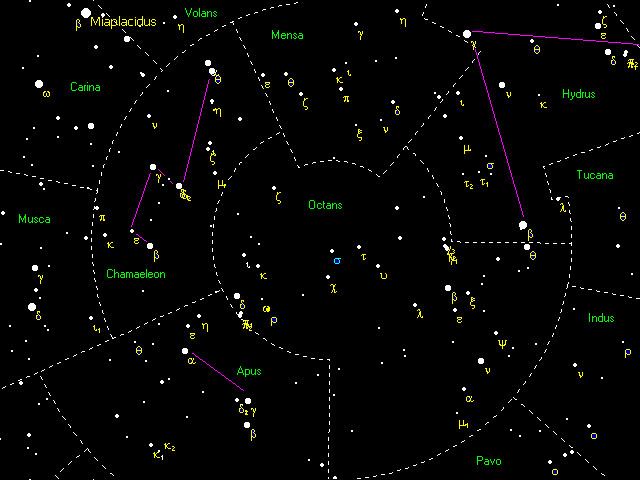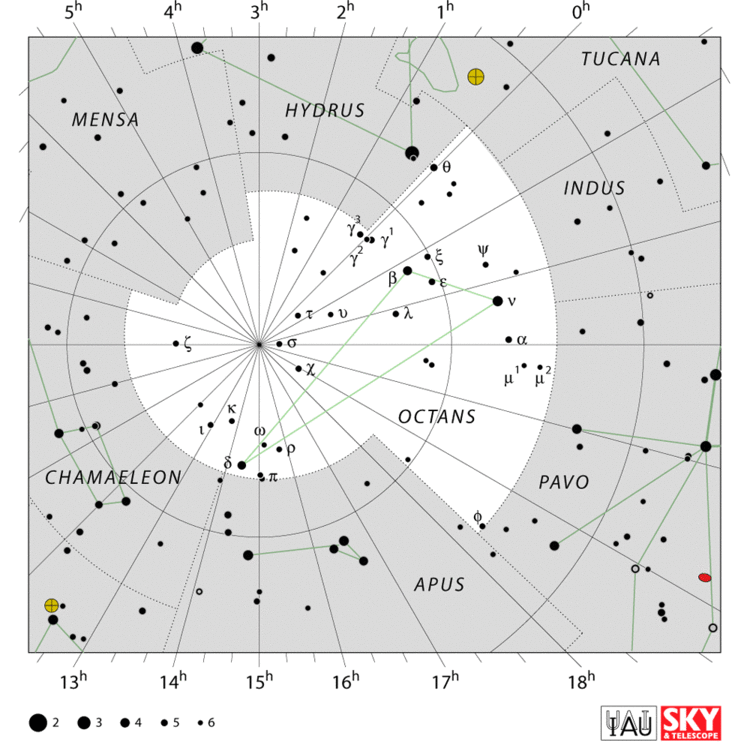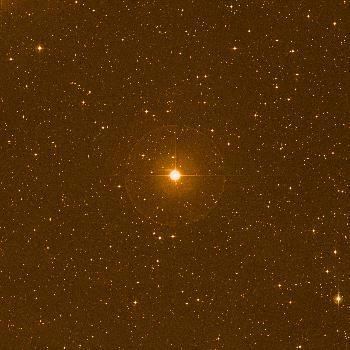Surface temperature 7,460 K Radius 2.645 million km (3.8 R☉) | Mass 3.978 × 10^30 kg (2 M☉) Magnitude 5.42 Apparent magnitude (V) 5.42 | |
 | ||
Similar Alpha Trianguli Australis, Zeta Centauri, Alpha Trianguli, 46 Leonis Minoris, Alpha Fornacis | ||
Sigma Octantis (σ Oct, σ Octantis) is a magnitude 5.42 star in the constellation Octans, notable for being the current South Star. Sigma Octantis is approximately 270 light years from Earth, and is classified as a giant, with a spectral type of F0 III. It is a Delta Scuti variable, with magnitude varying by about 0.03 magnitudes over 2.3 hours.
Contents

Sigma Octantis is the dimmest star to be represented on a national flag. It appears on the flag of Brazil, symbolising the Brazilian Federal District.
Its position near the southern celestial pole makes it the southern hemisphere's pole star, hence it is occasionally called Polaris Australis.

Flat earth sigma octantis finally explained
Southern pole star

Sigma Octantis is the southern pole star, whose counterpart is Polaris, the current North Star. To an observer in the southern hemisphere, Sigma Octantis appears almost motionless and all the other stars in the Southern sky appear to rotate around it. It is part of a small "half hexagon" shape. It is over a degree away from the true south pole, and the south celestial pole is moving away from it due to precession of the equinoxes.
Locating Sigma Octantis

At magnitude +5.42, Sigma Octantis is barely visible to the naked eye, making it unusable for navigation, especially by comparison with the much brighter and more easily visible Polaris. Because of this, the Crux constellation is often preferred for determining the position of the South Celestial Pole. Once Sigma Octantis' approximate position has been determined, either by the major stars in Octans or using the Southern Cross method, it can be positively verified using an asterism: Sigma, Chi, Tau, and Upsilon Octantis are all stars of around magnitude 5.6, and form the distinctive shape of a trapezoid.

